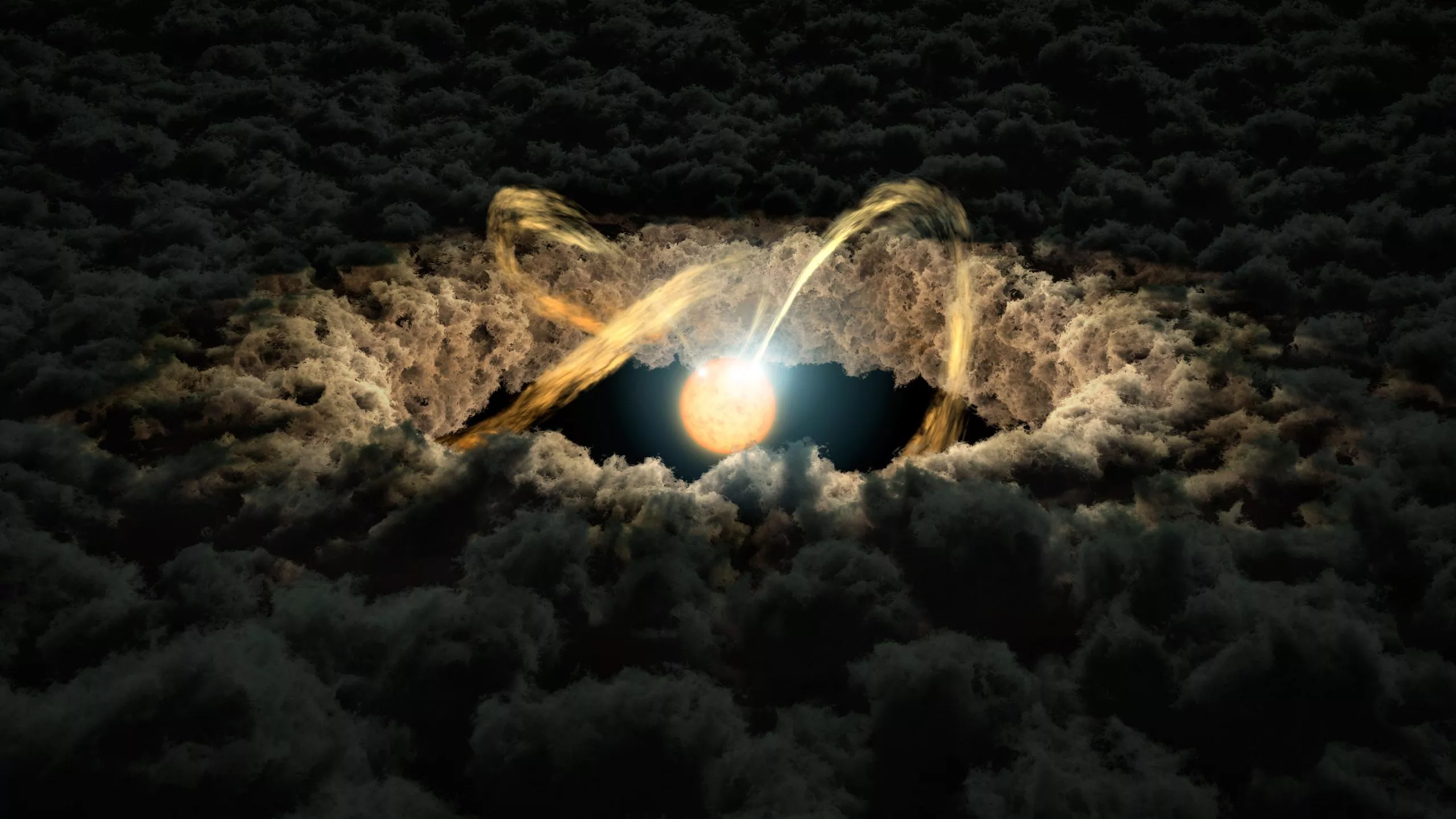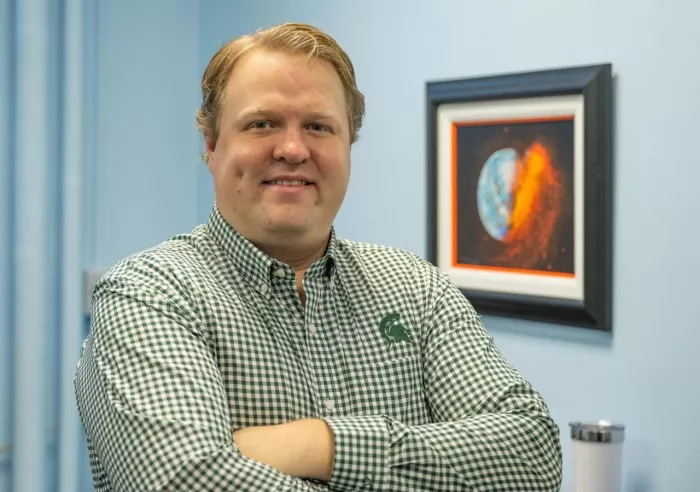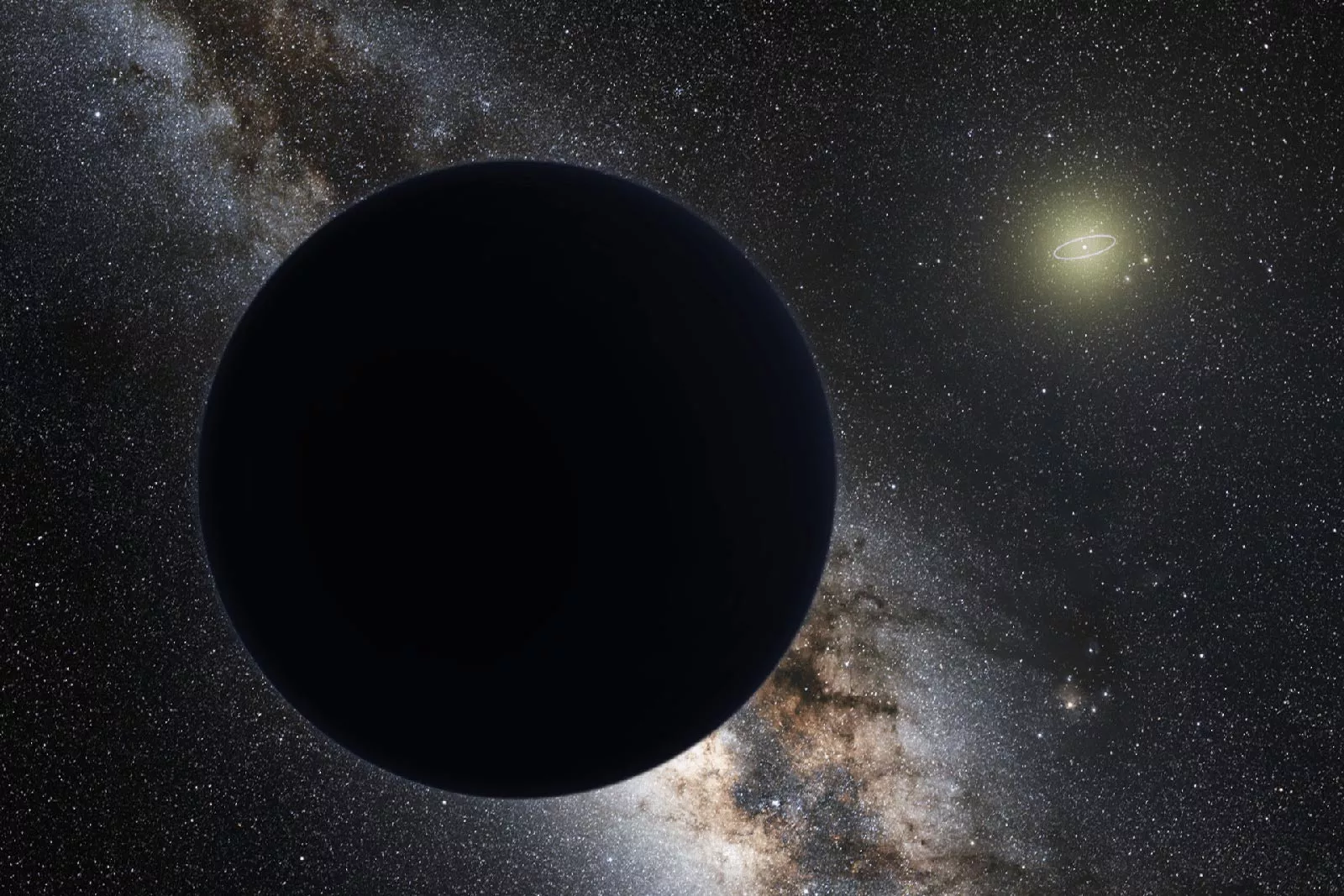Recently, Seth Jacobson From Michigan State University And Colleagues In China And France Published A New Theory That May Help Solve The Mystery Of How Our Solar System Evolved Into The Milky Way Specifically, How Did The Gas Giants - Jupiter, Saturn, Uranus And Neptune - Reach Their Positions And Orbit The Sun Like Them?
These Findings Have Implications For How Land Planets Like Earth Develop And The Possibility That A Fifth Gas Giant Planet Could Lurk 50 Billion Miles Away.
"Our Solar System Doesn't Always Look Like It Does Today. In Its History, The Orbits Of Planets Have Changed Fundamentally. But We Can Figure Out What Happened," Said Jacobson, An Assistant Professor From The Department Of Earth And Environmental Sciences At The School Of Natural Sciences
A Good Model
Huge, Swirling Clouds Of Cosmic Gas And Dust Gave Birth To Stars. When Our Sun Ignited, The Early Solar System Was Still Full Of Primitive Gas Disks, Which Played An Important Role In The Formation And Evolution Of Planets, Including Gaseous Giant Planets.
At The End Of The 20th Century, Scientists Began To Believe That Gas Giant Planets Initially Orbited The Sun In Neat, Compact And Evenly Spaced Orbits. However, Jupiter, Saturn And Other Planets Have Long Precipitated Into Relatively Rectangular, Misplaced And Scattered Orbits.
So Now The Question For Researchers Is Why?
In 2005, An International Team Of Scientists Put Forward The Answer To This Question In Three Landmark Papers In Nature. The Solution Was Originally Proposed In Nice, France, Which Is Called Nice Model. It Assumes That There Is Instability Between These Planets, And A Chaotic Set Of Gravitational Interactions Eventually Put Them On Their Current Path.
"This Is A Structural Shift In The Way People Thought About The Early Solar System," Jacobson Said
Although The Nice Model Is Still A Leading Explanation, In The Past 17 Years, Scientists Have Found A New Problem - What Causes The Instability Of The Nice Model.
For Example, It Was Initially Thought That The Instability Of Gaseous Giants Occurred Hundreds Of Millions Of Years After The Original Gas Disk That Gave Birth To The Solar System Dispersed. But Newer Evidence Suggests It Happens Faster. This Also Raises New Questions About The Evolution Of The Interior Of The Solar System As The Earth's Home.
Jacobson Worked With Beibei Liu Of Zhejiang University In China And Sean Raymond Of The University Of Bordeaux In France To Help Find A Solution Related To How Instability Began. The Team Proposed A New Trigger.
"I Think Our New Ideas Can Really Relax Many Tensions In This Field, Because We Have A Very Natural Answer, That Is, When Did The Instability Of Giant Planets Happen," Jacobson Said.
New Trigger
The Idea Began With A Conversation Between Raymond And Jacobsen In 2019. Their Theory Is That Gas Giants May Have Been Set In Their Current Path Because Of The Way The Original Gas Disk Evaporated. This Can Explain How These Planets Spread Earlier Than Originally Assumed By The Nice Model During The Evolution Of The Solar System, And There May Even Be No Instability To Push Them There.
"We Want To Know If The Nice Model Really Needs To Explain The Solar System. We Put Forward The Idea That Giant Planets May Spread Out Through The 'rebound' Effect When The Disk Dissipates, And There May Never Be Instability," Raymond Said
Raymond And Jacobsen Then Contacted Liu, Who Pioneered The Idea Of This Rebound Effect Through Extensive Simulations Of Gas Disks And Large Exoplanets - Planets In Other Solar Systems - Moving Close To Their Stars.
"The Situation In Our Solar System Is Slightly Different Because Jupiter, Saturn, Uranus And Neptune Are All In Wider Orbits. After Several Repeated Brainstorming, We Realized That This Problem Could Be Solved If The Gas Disk Dissipates From The Inside Out," Liu Said
Raymond Said The Team Found That This Internal And External Dissipation Provided A Natural Trigger For The Instability Of The Nice Model. "We Finally Strengthened The Nice Model Instead Of Destroying It. This Is An Interesting Example Of Testing Our Preconceived Ideas And Following The Results, Wherever They Point."
With The New Trigger, The Picture At The Beginning Of The Instability Period Looks The Same. There Is Still A Newborn Sun Surrounded By Clouds Of Gas And Dust. A Few Young Gas Giants Surround The Star And Pass Through The Cloud In Neat, Compact Orbits.
"All Solar Systems Form In Disks Of Gas And Dust. This Is A Natural By-product Of How Stars Form," Jacobson Said. "But When The Sun Turns On And Starts Burning Its Nuclear Fuel, It Produces Sunlight, Heats The Disk And Eventually Blows It Away From The Inside Out."
This Creates A Growing Hole In The Gas Cloud Centered On The Sun. As The Hole Grows, Its Edge Sweeps Through The Orbit Of Each Gas Giant. According To The Team's Computer Simulation, This Transition Leads To The Necessary Giant Planet Instability, And The Probability Is Very High. Compared With The Original Time Line Of Hundreds Of Millions Of Years In The Nice Model, The Process Of Transferring These Large Planets To Their Current Orbit Is Also Progressing Rapidly.
In Addition, The New Trigger Also Triggered The Mixing Of Materials In The Outer Solar System And The Inner Solar System. The Geochemistry Of The Earth Shows That Such Mixing Needs To Take Place While Our Planet Is Still Forming.
"This Process Really Stirs Up The Inner Solar System From Which The Earth Can Grow," Jacobson Said. "This Is Quite Consistent With The Observations. Exploring The Link Between Instability And Earth Formation Is A Theme Of The Group's Future Work."
Finally, The Team's New Explanation Applies To Other Solar Systems In Our Galaxy, Where Scientists Have Observed Gas Giants Orbiting Their Stars In A Configuration Similar To What We See In Our Own Galaxy.
Planet 9 From Outer Space
Although The Team's Paper Does Not Emphasize This Point, Jacobson Points Out That The Work Has An Impact On One Of The Most Popular And Occasionally Heated Debates About Our Solar System - How Many Planets Are There.
At Present, The Answer Is Eight, But It Turns Out That When The Early Solar System Had Five Gas Giant Planets Instead Of Four, The Nice Model Worked Slightly Better. Sadly, According To The Model, The Extra Planet Was Thrown Out Of Our Solar System By A Hammer During An Unstable Period.
However, In 2015, Researchers At The California Institute Of Technology Found Evidence That There May Be An Undiscovered Planet Outside The Solar System. Neptune Is About 50 Billion Miles Away From The Sun, About 47 Billion Miles Away.
However, There Is Still No Specific Evidence That The Hypothetical Planet - Planet 9 - Or The "extra" Planet Of The Nice Model Does Exist. But If They Do Exist, Will They Be The Same?
Jacobson And His Colleagues Can't Directly Answer This Question With Their Simulation, But They Can Do The Next Best Thing -- Know That Their Instability Trigger Correctly Reproduces The Current Situation Of Our Solar System, And They Can Test Whether Their Model Works Better Starting With Four Or Five Gas Giant Planets.






